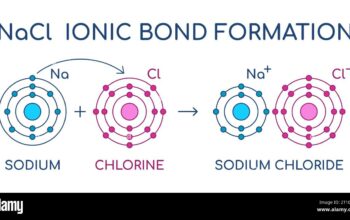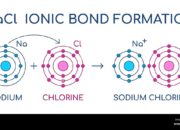In the intricate tapestry of chemistry and physics, bonds form the very foundation of matter. Among the myriad types of bonds, molecular bonds and nuclear bonds stand out due to their distinct functions and characteristics. But have you ever pondered how these two types of bonds—each fundamental in its own right—differ from one another? This inquiry not only invites us to explore nature’s complexity but also challenges us to appreciate the nuances that govern interactions at the molecular and nuclear levels.
To commence our exploration, it is vital to delineate the fundamental nature of molecular bonds. Molecular bonds predominantly govern the interactions between atoms, dictating how they combine to form molecules. The primary types include covalent, ionic, and metallic bonds. Covalent bonds arise when two atoms share electron pairs, fostering stability and resulting in the formation of diatomic molecules such as O2 and H2. Ionic bonds, in contrast, manifest from the electrostatic attraction between positively and negatively charged ions, as commonly observed in compounds like sodium chloride (NaCl). Meanwhile, metallic bonds involve a collective sharing of electrons among a lattice of metal atoms, contributing to unique properties such as electrical conductivity and malleability.
Now, let us pivot to nuclear bonds, which operate on an entirely different scale and principle. Nuclear bonds refer to the forces that bind protons and neutrons within an atomic nucleus. The strong nuclear force, a fundamental interaction in particle physics, is responsible for overcoming the repulsive electromagnetic force between positively charged protons. This interplay ensures the stability of the nucleus, which is crucial for the existence of matter as we know it. Unlike molecular bonds, nuclear bonds are significantly stronger but act over much shorter distances—typically on the order of femtometers (10-15 meters).
The disparity in strength between molecular and nuclear bonds raises intriguing questions. If molecular bonds are relatively weak compared to their nuclear counterparts, how do they exert such profound influence over the behavior of matter? This question leads us into the realm of biological systems and material properties. While nuclear bonds may secure the heart of an atom, molecular bonds orchestrate the intricate reactions that underpin life, from cellular processes to chemical syntheses.
When we consider the energy involved in these bonds, the contrast becomes even more pronounced. Breaking a covalent bond, for example, may require approximately 200-500 kilojoules per mole. In stark contrast, disrupting nuclear bonds demands energy on the order of millions of kilojoules per mole, illustrating a profound difference in the scale of interactions. This disparity highlights why chemical reactions, which largely involve the rearrangement of molecular bonds, occur at speeds that are inscrutable to us in the broader context of nuclear stability and decay.
Moreover, the differences extend to their roles in various physical phenomena. Molecular bonds are critical to the state of matter—solid, liquid, or gas. The strength and nature of molecular interactions dictate properties such as boiling and melting points, solubility, and vapor pressure. Conversely, nuclear bonds have significant implications for nuclear reactions, including fission and fusion. These processes release tremendous amounts of energy and are central to understanding both stellar phenomena and the mechanics of nuclear reactors.
An examination of how molecular and nuclear bonds respond to external stimuli yields further insights into their dissimilarities. The influence of temperature, pressure, and electromagnetic radiation can dramatically affect molecular bond integrity; for example, increasing temperature often results in the kinetic energy that can break molecular bonds. In contrast, nuclear bonds exhibit relative resilience against external environmental factors. The energy levels required to alter nuclear configurations—such as those that take place in radioactive decay—are far beyond the thresholds of typical chemical processes.
In any discussion of bonds, it is essential to consider their implications in technological and scientific advancements. Molecular bonds are at the forefront of innovations in drug design, materials science, and nanotechnology. Their manipulation allows chemists to synthesize new compounds with desired properties. On the flip side, nuclear bonds catalyze advances in energy production and medical applications, such as radioactive tracers in imaging and targeted cancer therapies.
With this extensive exploration of the differences and implications of molecular and nuclear bonds, one might ask themselves: How might the universe have unfolded had molecular bonds been as strong as nuclear bonds? This playful question nudges us toward the recognition that the delicate balance of forces in nature dictates the very fabric of existence. If molecular bonds were as formidable as nuclear bonds, would life as we know it even be possible? The answer to such queries remains in the speculative territory of science, beckoning future investigations and discussions.
In summary, the fundamental differences between molecular bonds and nuclear bonds underscore the complexity of interactions that govern matter. From their strengths and energy dynamics to their roles in various processes and technological advancements, these bonds showcase the exquisite craftsmanship of the universe. A deeper understanding of their intricacies not only enhances our knowledge of the material world but also fosters appreciation for the underlying principles that bind everything together—from the tiniest molecules to the majestic structures of the cosmos.











